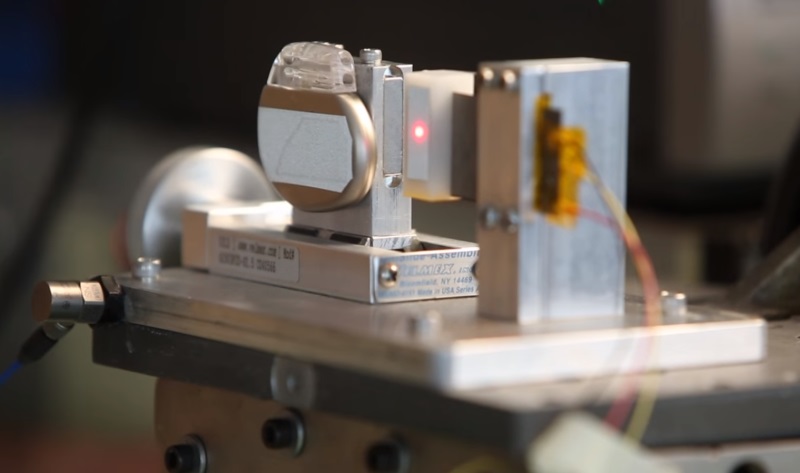- Home
- Science
- Science News
- Scientists Developing Battery Free Pacemakers Powered by the Heart
Scientists Developing Battery-Free Pacemakers Powered by the Heart

The advancement is based upon a piezoelectric system that converts vibrational energy - created inside the chest by each heartbeat - into electricity to power the pacemaker.
"Essentially, we're creating technology that will allow pacemakers to be powered by the very heart that they are regulating," said M Amin Karami, assistant professor of mechanical engineering at the University at Buffalo School of Engineering and Applied Sciences, who is leading the research.
The technology may eliminate the medical risks, costs and inconvenience of having a battery replacement every five to 12 years for millions of people worldwide, researchers said.
About the size of a pocket watch, pacemakers are implanted under the skin through an incision in the chest.
Wires, also called leads, connect the device to the heart and deliver electrical signals that regulate the heart's activity.
The new wireless option does not require leads because it rests inside the heart. This removes a potential point of failure, but the device still relies on a battery that must be replaced as often as the batteries that conventional pacemakers use.
The idea of heart-powered pacemakers came to Karami after doing PhD work on piezoelectric applications for unmanned aerial vehicles and bridges. He wanted to apply that knowledge to the human body.
The heart was an obvious choice because of its relative strength and constant motion.
"To see the heart in motion - even an animation - is to be awestruck. It moves significantly. In turn, that movement creates energy that we're just now figuring out how to harvest," said Karami.
Karami initially designed a flat piezoelectric structure for a conventional pacemaker. A prototype generated enough power to keep the pacemaker running at a range of 7 to 700 beats per minute.
With the development of wireless pacemakers, however, he has revamped the design to accommodate the smaller, tube-shaped device.
Karami, who is already talking to device-makers, is building the new prototype and expects to have animal tests done within two years.
Catch the latest from the Consumer Electronics Show on Gadgets 360, at our CES 2026 hub.
Related Stories
- Samsung Galaxy Unpacked 2025
- ChatGPT
- Redmi Note 14 Pro+
- iPhone 16
- Apple Vision Pro
- Oneplus 12
- OnePlus Nord CE 3 Lite 5G
- iPhone 13
- Xiaomi 14 Pro
- Oppo Find N3
- Tecno Spark Go (2023)
- Realme V30
- Best Phones Under 25000
- Samsung Galaxy S24 Series
- Cryptocurrency
- iQoo 12
- Samsung Galaxy S24 Ultra
- Giottus
- Samsung Galaxy Z Flip 5
- Apple 'Scary Fast'
- Housefull 5
- GoPro Hero 12 Black Review
- Invincible Season 2
- JioGlass
- HD Ready TV
- Laptop Under 50000
- Smartwatch Under 10000
- Latest Mobile Phones
- Compare Phones
- Honor Magic 8 RSR Porsche Design
- Honor Magic 8 Pro Air
- Infinix Note Edge
- Lava Blaze Duo 3
- Tecno Spark Go 3
- iQOO Z11 Turbo
- OPPO A6c
- Samsung Galaxy A07 5G
- Lenovo Yoga Slim 7x (2025)
- Lenovo Yoga Slim 7a
- Lenovo Idea Tab Plus
- Realme Pad 3
- Moto Watch
- Garmin Quatix 8 Pro
- Haier H5E Series
- Acerpure Nitro Z Series 100-inch QLED TV
- Asus ROG Ally
- Nintendo Switch Lite
- Haier 1.6 Ton 5 Star Inverter Split AC (HSU19G-MZAID5BN-INV)
- Haier 1.6 Ton 5 Star Inverter Split AC (HSU19G-MZAIM5BN-INV)






![[Sponsored] Haier C90 OLED TV | Dolby Vision IQ, 144Hz OLED and Google TV in Action](https://www.gadgets360.com/static/mobile/images/spacer.png)









